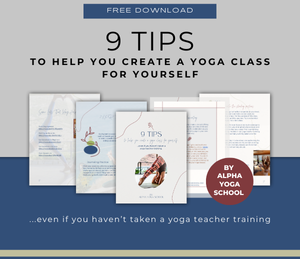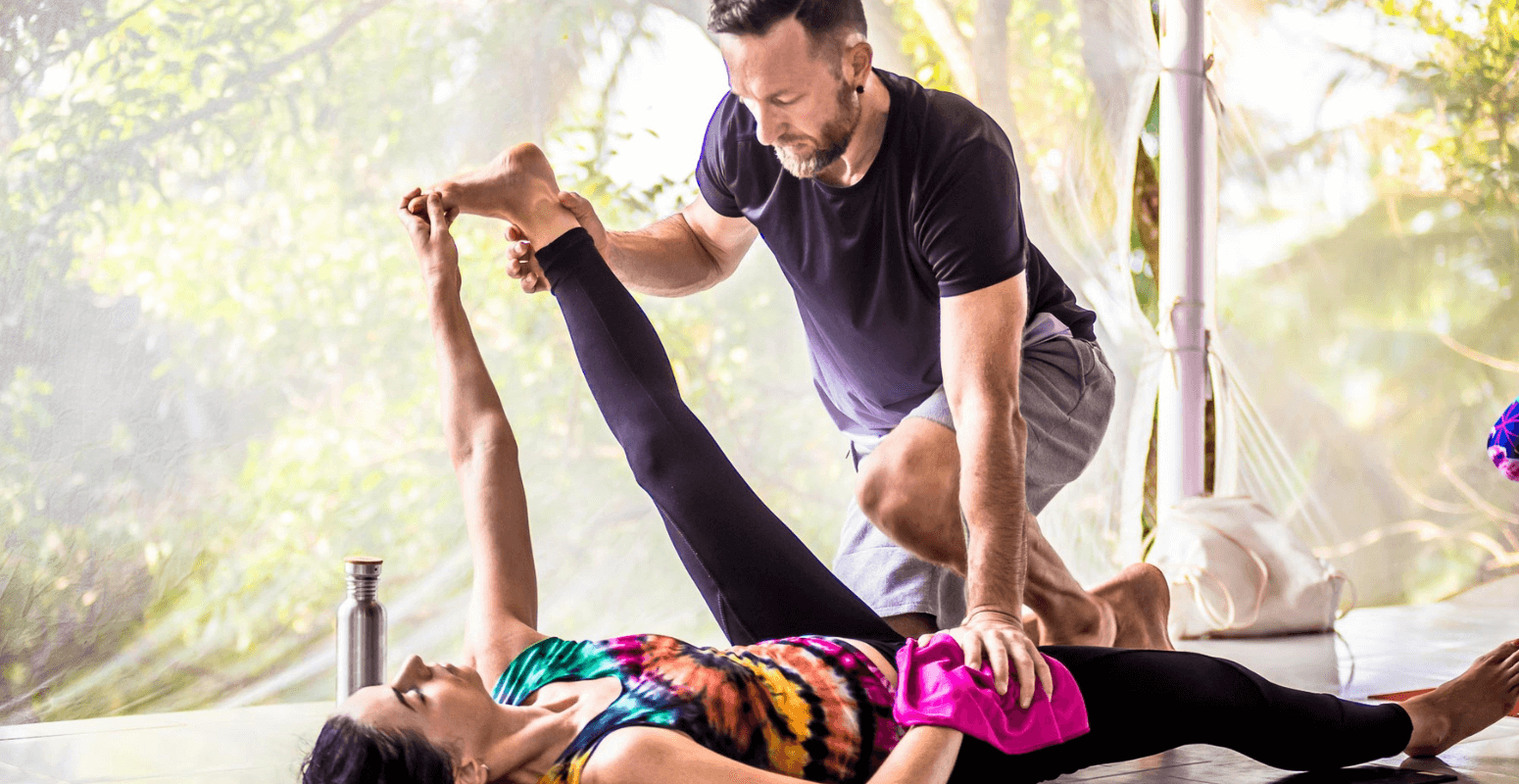Understanding the difference between Ashtanga Vinyasa Yoga and Vinyasa Yoga can be tricky. Sometimes, people think they practice Ashtanga Yoga, but all along, they practice Vinyasa Yoga. To clear up any confusion, we’re sharing a detailed explanation of how Ashtanga Vinyasa Yoga and Vinyasa Yoga differ! We hope this informs your journey into a deeper yoga practice and starts with the correct method for your needs. Ultimately, the more benefits a practice gives you, that will be the best practice for you.
Ashtanga vs Vinyasa Yoga
Ashtanga is a rigorous, challenging, and fast-paced yoga practice, first developed by Sri K Pattabhi Jois (1915-2009) in 1932. Pattabhi Jois based his teachings on an ancient yogic text. This text is called Patanjali’s Yoga Sutras. It’s important to recognize that given its roots in ancient yogic scripture, Ashtanga yoga is much more than just a physical practice.
Many people like Ashtanga Yoga because of its high-intensity adrenaline. Yet, Ashtanga is a spiritual practice and way of life. It is the foundational practice of modern-day yoga (Power Yoga, Vinyasa Flow, Jivamukti, and Rocket). These are a few practices that stem from the Ashtanga Vinyasa. Ashtanga works with a set series of postures that open, align, strengthen and purify the body. The breath links the postures through flowing movements from one to another.
This is the amazing part about Ashtanga Vinyasa Yoga. Since you memorize a set sequence of increasingly challenging postures, you always have something to work on without having to think about sequencing.
In Ashtanga Vinyasa yoga, you experience the same postures in the same sequence each time. You do the same postures again and again. This way you see progress and you know which pose is coming next. You don’t have to think of the next pose or look around to see what pose the other people are doing.


Types of Ashtanga Vinyasa Classes
There are two types of Ashtanga Vinyasa classes: a guided class led by an instructor and the self-practice or so-called ‘Mysore-style. This is what more confident students can do in the comfort of their own homes once they have learned the sequence by heart. This means you don’t always need a teacher and can practice Ashtanga on your own, wherever you are.
Many yoga studios have Mysore-style classes on their schedule where you practice the set sequence in silence and receive delicious hands-on adjustments from your teacher. These studios have a window of half an hour or an hour where you can join the class and this way you don’t have to worry about being late to class or keeping the same pace as everyone else. This class structure offers you the ability to find the proper alignment of each pose and link the movement with the breath. With your breath. Your mind is able to relax and remain purely focused on the task at hand: moving through the moment.
Benefits of Ashtanga Yoga
Ashtanga’s energetic practice keeps you in shape, both mentally and physically. Ashtanga translates to an eight-limb path and is, for many, a way of life. It is the basis or guideline for living a life of Yoga. The overarching idea is that one can find a state of inner peace through the practice of breath, yoga poses, contemplation, and meditation. For these reasons, we use Ashtanga Vinyasa Yoga as the groundwork for our 200-hour YTT. Did you know that the best and fastest way to learn Ashtanga is to immerse yourself in yoga teacher training? Check out our two week yoga teacher training in Greece. Fourteen days give you plenty of time to learn the Ashtanga set sequence and be able to do it on your own.
4 different series or levels
The primary, the intermediate, and 2 advanced series. Ideally, one doesn’t progress to the next level or series before gaining mastery over most, if not all of the important postures of the prior series. Your Ashtanga teacher is the one to tell you if you can progress to the next series or not. Ashtanga classes don’t offer music and (ideally) no props or modifications. The aim of this style falls into the category of physical energy and mental focus, which leads to advanced practice and a clear mind.
Want to know the 6 main reasons to start and sustain an Ashtanga practice?

Not sure whether this style is the right fit for you? It most likely is if you:
- Love fitness and want to practice yoga in a more intense, vigorous way
- Are looking for a practice that paves the way to a more spiritual and philosophical experience.
- Like practicing by yourself and at your own pace.
- Are looking for a practice that takes you inward: in Mysore-style ashtanga, there is no set pace, every student matches their movement to their individual breath.
- Turn to yoga to increase your capacity to focus mentally and meditate.
- Find comfort in the routine of doing the same sequence
- Like a challenge.
- Don’t mind getting sweaty!
- Are an early riser. Most ashtangis practice really early in the morning, before they’ve even had breakfast…
- Have the time – completing the full sequence can take you between 90 minutes to 2 hours.

You would make a great Ashtanga yoga teacher if you:
-
Practice Ashtanga Vinyasa Yoga. This is the most important!
- Are fascinated by the traditions of yoga and its historical roots.
-
Love receiving hands-on adjustments and want to learn how to do them
-
Are very disciplined
-
Don’t want to be demonstrating and leading a class at the same time
-
Are interested in the inner work that yoga can offer you.
Vinyasa vs Ashtanga
“Take the Vinyasa”

Vinyasa yoga is the right fit for you if you:
- Are a beginner to yoga, but in good physical fitness
- Want to build strength and flexibility but aren’t ready for the intensity of ashtanga
- Are looking for a more varied and fun sequence
- Only have time for short classes.
You would be a good vinyasa teacher if you:
- Are very creative and enjoy coming up with yoga sequences
- Like flowing to music
- Prefer focussing more on the external flow and experience of yoga, rather than the inner meditation
- Like to participate in the classes you are teaching

Download our free guide and start creating your own Vinyasa classes.
Take Away
9 Important Tips to Know Before Choosing the Right Yoga Teacher Training Course for You.







 Learn how to create a yoga class for your own practice
Learn how to create a yoga class for your own practice
I love your explanations about the difference between those yoga styles